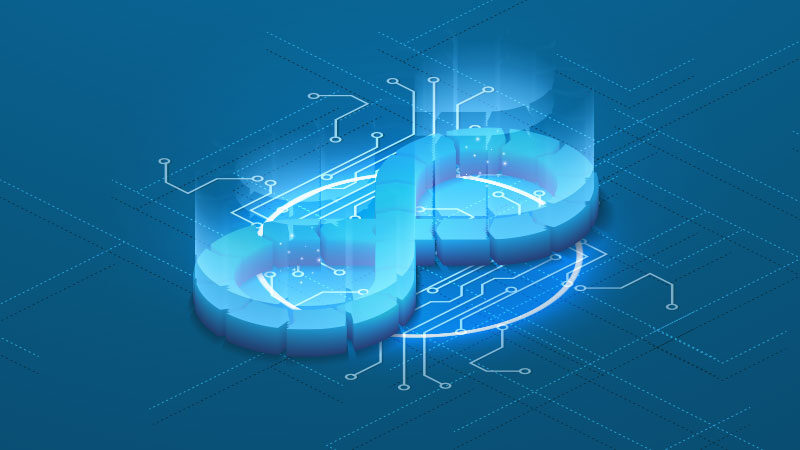Supercharge Deployments at Scale with Next-Gen DataOps
Looking Back: DataOps Foundations in 2022
The data landscape evolves fast, and by 2022, this evolution culminated in a new market emerging—Data Operations (DataOps). This first generation of tools addressed some of the most critical pain points of data teams at the time—fragmented workflows, cloud migrations, and siloed teams. Similar to the way DevOps bridged software development and operations, DataOps transformed data management by operationalizing workflows within the data lifecycle, making the process more agile from the start.
This initial generation of DataOps tools prioritized pipeline orchestration and automation, focusing on coordinating data ingestion, transformation, and workflow management while handling dependencies along the way. An excellent example of this is Apache Airflow, a tool that played a pivotal role in addressing the aforementioned challenges. As the field evolved to the second generation of tools, DataOps shifted towards ETL modernization with the rise of wider platform approaches, bundling component tools into more coordination-driven solutions for streamlined data management.
More recently, as enterprises entered an era of rapid shifts—driven by AI, ML, and real-time analytics—the scale and complexity of data pipelines surged. In response, an exciting new generation of DataOps tools has emerged, purpose-built to tackle these evolving challenges and meet the demands of modern data operations at enterprise scale.
Where We Are Now: DataOps Trends of 2024
The third generation of DataOps tools marks a shift towards tighter integration with software engineering fundamentals. Concepts like Continuous Integration/Continuous Delivery (CI/CD) and Infrastructure-as-Code (IaC) are becoming central to data engineering workflows, pushing development earlier in the data lifecycle. With this new generation of DataOps tools, three core capabilities entered the fray signaling the pivot towards the next step in the DataOps market.
Test Automation
Today’s DataOps teams face greater complexity than ever. Larger pipelines, more data delivery points, and the need for seamless workflows present constant challenges. Test automation tools have emerged to systematically validate business rules through ‘dry runs’ and test data frameworks, catching issues early and reducing errors for smoother releases. This proactive approach keeps development on track and ensures reliable outcomes.
Example Solutions: Grai, Foundational, Datagaps
Environment Management
A major concern with legacy ETL tool conversions is the challenge of integrating diverse data systems across on-premises, cloud, and hybrid environments. Inconsistent integration between tools creates further silos, hinders data governance, and limits end-to-end pipeline observability. Capabilities in new tools address these issues by enhancing flexibility and reducing integration rigidity. On the infrastructure side, IaC-driven environment management automates the provisioning and optimization of resources. Templated infrastructure combined with secure credential management ensure resource efficiency, repeatability, and security across hybrid and multi-cloud systems. With these tools, data teams can focus on delivering high-quality data products using solutions that remain scalable, reliable, and aligned with governance standards.
Example Solutions: Airbyte, Kestra, Dagster
Deployment Automation
Leaning further into agile practices to create scalability and efficiency, new solutions are introducing deployment automation integrated with CI/CD frameworks to streamline version control, release cycles, and change management. AI-powered CI/CD tools further accelerate these processes using automated code generation. Solutions are even moving towards the concept of self-healing pipelines that adapt configurations in real time to handle unexpected disruptions.
Example Solutions: Ascend, Ardent AI, Prophecy
As 2024 draws to a close, DataOps is poised for further growth. Existing practices have often resulted in high operational overhead from continuous monitoring, testing, and troubleshooting. With AI and real-time analytics driving innovation, companies need agile, reliable pipelines more than ever to keep pace with evolving demands.
What’s Next: The Future of DataOps
Looking forward, it’s clear that the DataOps market is set to grow even further. With organizations now treating data teams as key players in product delivery, the emphasis is shifting toward building pipelines that are not only scalable but also agile enough to handle new demands from AI and ML initiatives. These signals point towards the growth projected for the DataOps market over the next two to three years.
Adjacent market competition will also drive stronger pressures for vendors to differentiate and innovate their offerings. As the lines between markets blur—for example Data Observability and Data Integration—vendors are increasingly overlapping in functionality and converging in their capabilities. Solutions traditionally placed in the data observability market have incorporated pipeline monitoring and data anomaly detection placing them further into the lines of the DataOps ecosystem.
We expect this trend to continue to hold true as more vendors come to market, and as existing vendors build on their offerings. While this is taking place it is important to note that tools remain fragmented across the board and its very likely we will see consolidation over the next few years. Meaning that as businesses evaluate their tools, they need to do so with a strong assurance that they are avoiding redundant functionality and ensure they are investing in future-proofed solutions.
The Takeaway
DataOps has evolved from fixing workflow bottlenecks to becoming a strategic pillar for managing modern data pipelines. With AI and real-time analytics driving new demands, companies must adopt automated, flexible, and scalable solutions to stay competitive. The Innovation team’s 2022 predictions still hold true—there won’t be a single platform to meet every need. Instead, best-of-breed solutions will likely offer the most value by providing the flexibility required across the data stack. As the DataOps landscape matures, now is the time to refine your strategy because staying ahead in the race to harness data is everything.

Patrick Ortiz is an Innovation Research Associate here at Trace3. With a background in science and engineering and a drive for understanding the latest trends across the enterprise IT space, he continues to bring in a forward outlook and deliver on content to help our teams and clients understand the ever-changing landscape of IT solutions. When not researching, Patrick can be found exploring some of the best foodie locations in whichever city he’s visiting next.

